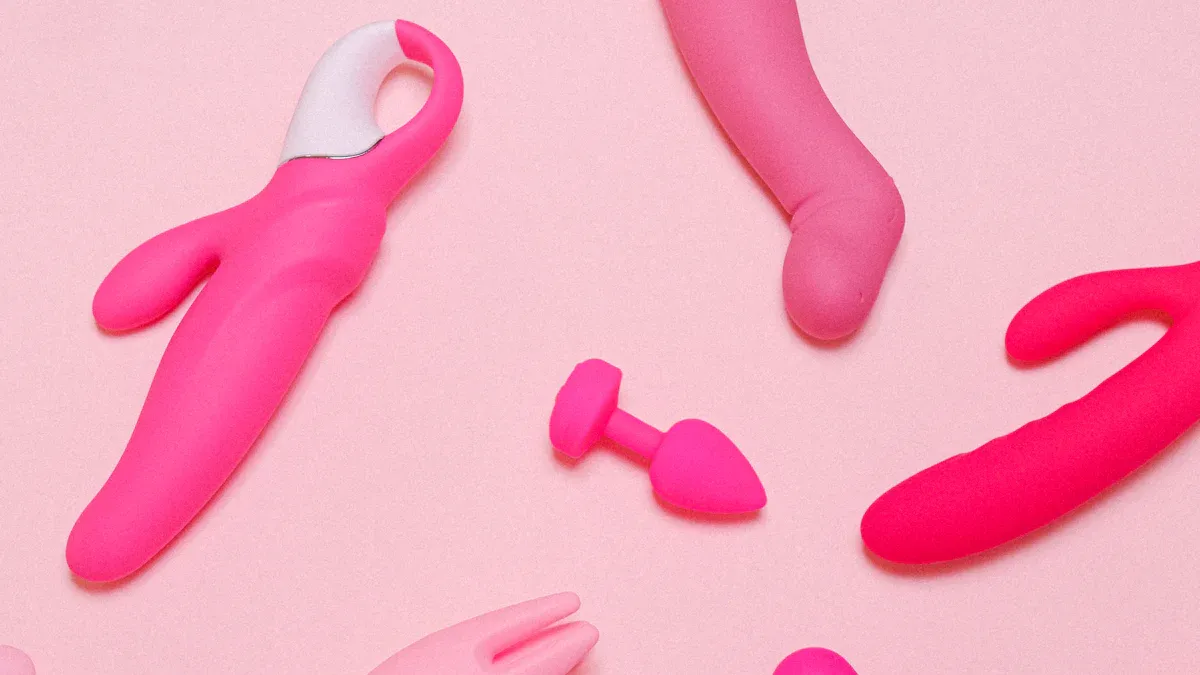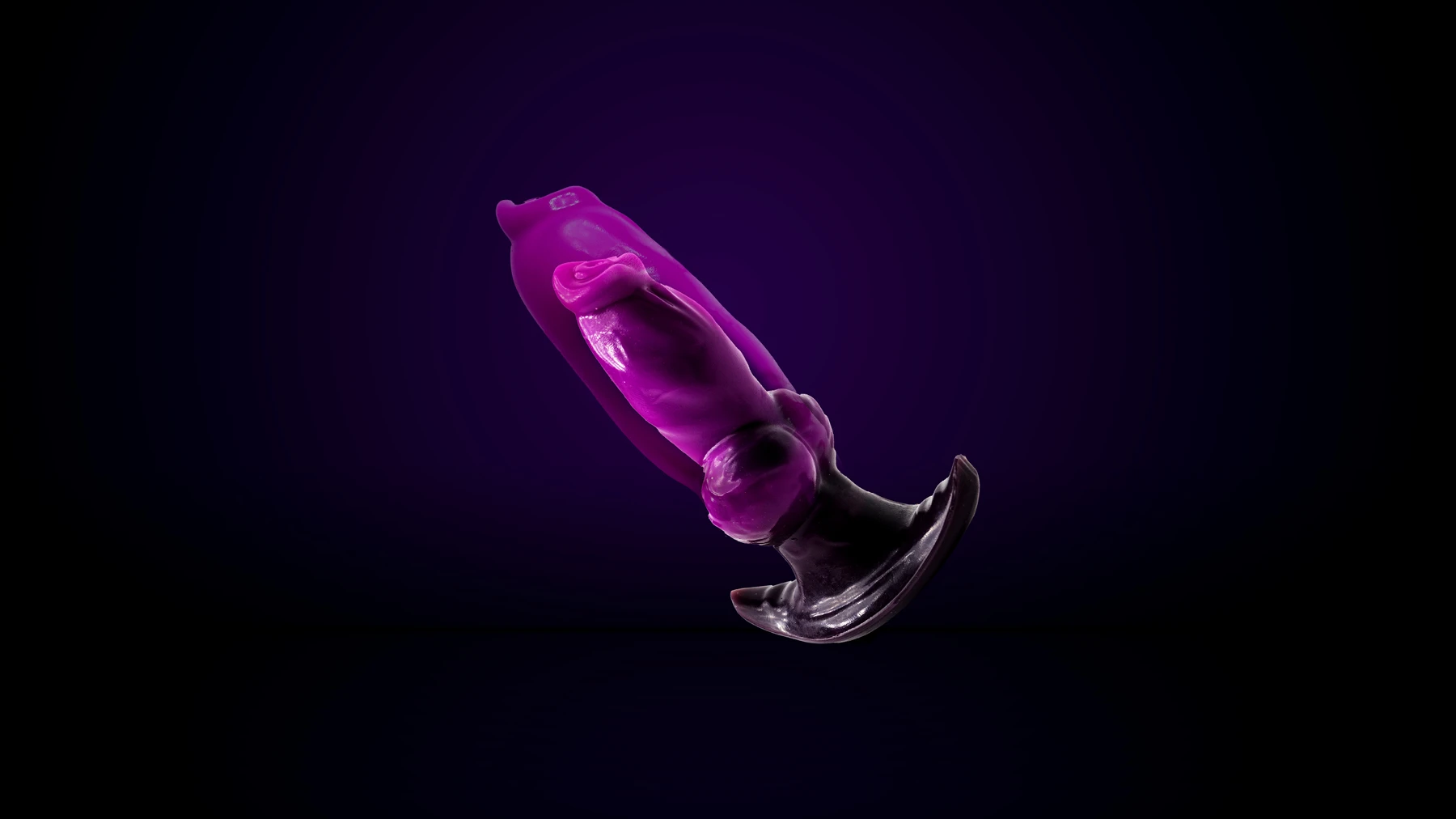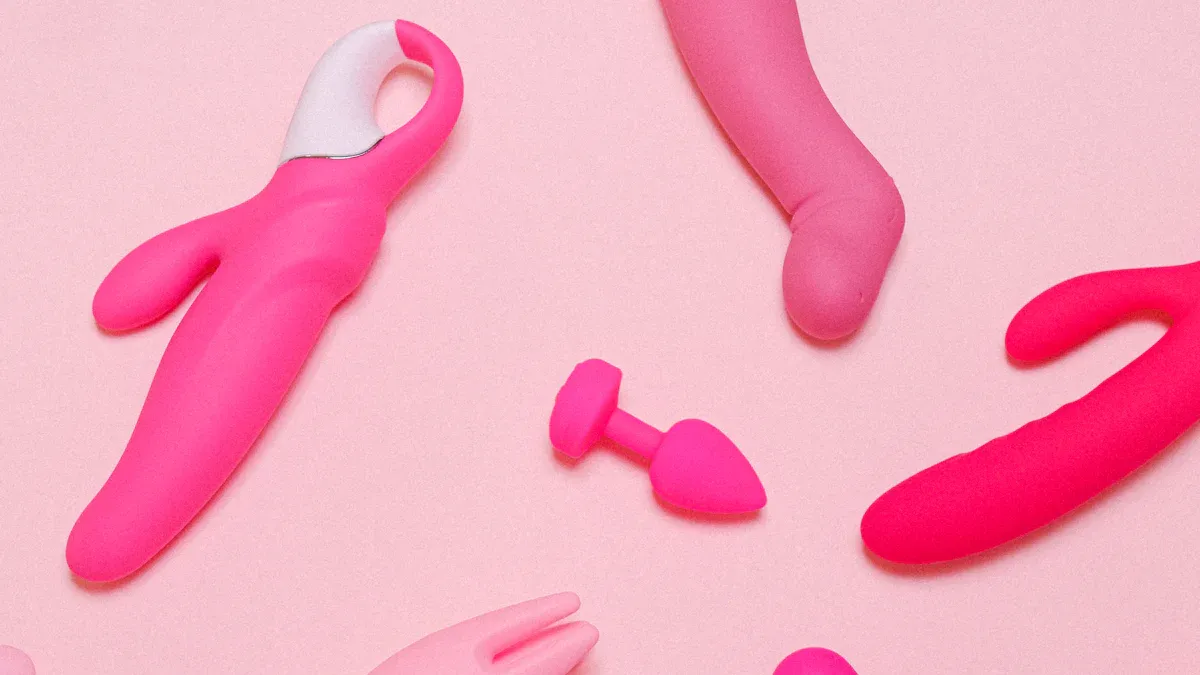Is It Safe to Use PVC Dildos

Many people use adult toys like pvc dildos, Squirting Strap on Dildos, Uncut Dildos, and Double Sided Dildos. These dildos can be risky for your health if the pvc is not safe for the body. Studies show that pvc dildo products can have phthalate (DEHP) levels from 0.07% up to 70%. Lead can also be found in these toys and may cause serious health problems.
Health Risk Factor | Statistic / Description |
|---|---|
Phthalate (DEHP) Levels | 0.07%–70% in sex toys |
Porosity | Porous PVC lets bacteria, mildew, and fungus grow |
Lead Contamination | High levels found in adult toys |
Some studies show that DEHP from adult toys can lead to weight gain, diabetes, and heart problems. Pvc dildos are not safe for the body and can break down over time. This means users could face health risks. Picking body-safe toys like platinum silicone can help keep you healthy and safe.
What Are PVC Dildos?

Material Overview
PVC dildos are made from polyvinyl chloride. This is a man-made plastic. Companies use PVC because it is cheap and easy to shape. Many adult toys use PVC as their main material. PVC can be made into lots of shapes and sizes. This lets companies make many different dildo styles.
PVC is popular because it is useful and not expensive.
It can be colored and textured in many ways.
PVC sex toys often have things like phthalates and dyes added. These make the toys softer or bendy, but they can also cause health worries.
A study found that PVC sex toys can have phthalates. Phthalates are chemicals that might mess with hormones. The study also showed PVC can let out tiny plastic pieces when used. Body fluids and lubricants can help these chemicals move from the toy into your body. This is why you should know what a dildo is made of before using it.
Common Uses in Sex Toys
Adult toys made from PVC come in many types. PVC sex toys include dildos, anal beads, vibrators, and sleeves. Many people pick PVC dildos because they are cheaper than platinum silicone toys. Some people like all the shapes and colors PVC can have.
Type of Adult Toy | Common Material | Features |
|---|---|---|
Dildo | PVC | Flexible, many shapes |
Anal Beads | PVC | Smooth, easy to mold |
Vibrator | PVC | Soft, can hold motors |
Sleeve | PVC | Stretchy, textured |
PVC sex toys are liked because they are easy to buy and come in many styles. But platinum silicone dildos are now more popular for people who want safer toys. Platinum silicone does not have phthalates and keeps out bacteria better than PVC. Many experts say to pick platinum silicone if you want a body-safe dildo.
Note: Always look at the box or product info to see if a dildo is made from platinum silicone or PVC. Picking platinum silicone can help lower health risks.
PVC Dildos Safety Risks
Toxic Chemicals and Phthalates
Many pvc sex toys have chemicals that can hurt your body. Makers add phthalates to make pvc dildos soft and bendy. Phthalates can move from the toy into your body when you use it. Studies say phthalates can mess up hormones, lower sperm quality, and cause birth defects. Some animal tests showed mice with DEHP had changes in heart rate and blood pressure. Other research links phthalates to asthma and allergies in kids and adults. These chemicals can also get into the air and dust, so you might breathe them in.
PVC sex toys can also have other bad things like lead, cadmium, and mercury. These metals can cause big health problems if they get in your body. Lab tests on PVC found lead as high as 3,270 ppm and cadmium up to 510 ppm. These tests used children’s toys, but adult toys made from PVC may have the same risks.
Product Example | Lead Levels (ppm) | Cadmium Levels (ppm) | Assessment Method Summary |
|---|---|---|---|
Hacky Sack | Up to 3270 | N/A | Wiping with wet filter paper and acid; wiping is like touching, acid is like chewing |
KFC Toy Drumstick | 20 | Up to 510 | Same wiping and acid methods as above |
Gemini Phone Cord | 910 | N/A | Same wiping and acid methods as above |
There are not many rules for adult toys, so unsafe chemicals might not get caught. Many experts say pvc dildos are some of the worst sex toy materials because of these dangers. Picking body-safe toys like silicone, stainless steel, or glass can help keep you safer.
⚠️ Tip: Always check if a dildo says it is body-safe and does not have phthalates or heavy metals.
Porosity and Bacterial Growth
PVC sex toys have tiny holes called pores. These holes can trap bacteria, mildew, and fungus. Even if you wash the toy, germs can stay inside. This makes it hard to keep clean and raises the chance of getting infections. Bacteria can grow in these small spaces and cause urinary tract infections, yeast infections, or even STIs.
A study with PVC columns showed bacteria can stick to and hide in porous materials. The more pores there are, the more bacteria can stay inside. This makes cleaning harder and raises the risk of spreading germs between people or after using the toy again.
Porous toys are tough to clean.
Bacteria and fungus can live inside the toy.
Infections can happen even if the toy looks clean.
People who want to stay safe should pick body-safe, non-porous toys. Using condoms on pvc sex toys can help, but it does not stop all risks.
Color Changes and Degradation
PVC dildos can change color as they get older. This means the material is breaking down. Heat, light, and water can make this happen faster. When PVC breaks down, it can let out bad chemicals like hydrogen chloride gas and other toxic stuff. These changes make the toy less safe and can cause health problems.
Aspect | Scientific Observation | Chemical/Physical Change | Resulting Color Change | Safety Risk |
|---|---|---|---|---|
Thermal degradation | Dehydrochlorination lets out HCl | New double bonds, carbonyl, hydroxyl groups form | PVC turns yellow or black | Toxic HCl gas and dioxins come out |
Photo-oxidative degradation | UV light makes free radicals and breaks chains | New double bonds, oxygen bridges, cross-linking | PVC turns yellow, then white or black | Faster breakdown and more toxic gases |
Temperature effects | Breaks down at about 135 °C, faster at 200 °C with oxygen | Polymer breaks down a lot and HCl comes out | Color changes more | More toxic gas and health dangers |
Stabilizer influence | Heat stabilizers like LDH slow color change | They soak up HCl and stop bad byproducts | Color change is slower or less | Less risk than lead or organotin stabilizers |
If a dildo turns yellow, white, or black, it means the material is breaking down. This can make the toy crack or let out bad chemicals. Using a toy like this can raise your chance of infections and other health problems.
Note: If a pvc dildo changes color, smells weird, or feels sticky, you should stop using it. Get a body-safe toy to protect your health.
Are “Phthalate-Free” PVC Sex Toys Body-Safe?
What “Phthalate-Free” Means
A lot of people see “phthalate-free” on pvc sex toys and think they are safe. Phthalates are chemicals that make PVC soft and bendy, but they do not stick to the plastic. These chemicals can get into your body when you use the toy. Some places, like the European Union, have rules to limit phthalates in toys because they can hurt your hormones. But there are not strong rules for adult toys. Companies might say “phthalate-free” if their toys do not have these chemicals, but only special lab tests can really check this.
Researchers found that some toys called “phthalate-free pvc” still had a lot of phthalates. One test found a toy with 61% phthalates even though it said it was safe. Other tests found no phthalates but found other chemicals like DOTP. DOTP is thought to be safer, but we do not know everything about it yet. This means the “phthalate-free” label does not always mean a toy is safe or non-toxic.
Note: Only trusted lab tests can show if a pvc sex toy is really free from bad chemicals.
Other Additives and Unknowns
When companies take out phthalates from pvc sex toys, they add other chemicals to keep the toys soft. These new chemicals, like 1,2-Cyclohexane dicarboxylic acid diisononyl ester or citrates, might be safer, but scientists are still learning about them. Some other things, like organotins, barium, and zinc, help keep the plastic strong but can cause health problems like hormone changes or nerve damage.
Some pvc sex toys can still have metals like lead or chromium that are not safe.
Even if a toy passes tests, it could still cause health problems we do not know about.
Using toys for a long time or recycling them can make you touch more of these chemicals.
Studies show that some of these chemicals can change hormone levels and might cause problems like insulin resistance or weight gain. We do not know all the health risks of these new chemicals yet. Because of these unknowns, experts say it is better to pick body-safe, non-toxic toys made from silicone, stainless steel, or glass to stay safer.
How to Identify and Use PVC Sex Toys Safely
Spotting PVC Materials
Many adult toys look alike, but they are not all made the same way. You can find out if a toy is PVC by reading the box or the product details. PVC toys usually feel soft and bendy. Sometimes they feel sticky to touch. Some PVC dildos have a strong plastic smell. This smell comes from the chemicals in the toy. Toys that are clear or have bright colors are often made from PVC because it holds color well. If the label does not say “platinum silicone,” “stainless steel,” or “glass,” the toy might be PVC.
Here are some quick ways to tell:
The toy smells like plastic or chemicals.
It feels sticky or oily after you wash it.
The label does not say “body-safe” or “medical-grade.”
Tip: If you are not sure, ask the seller or maker about the toy. Knowing what it is made of helps you stay safer.
Using Condoms and Cleaning Tips
If you already have a PVC sex toy, you can do things to lower your risk. Putting a condom on the dildo adds a layer of safety. This keeps the toy cleaner and helps stop germs or chemicals from touching your skin. Always use a new condom every time, especially if you share toys or use them with different people.
Keeping toys clean is important for your health. Wash the dildo with warm water and gentle soap after you use it. Make sure to dry it before you put it away. But cleaning does not get rid of all the bad stuff inside the toy. PVC has tiny holes that can trap germs, so washing only helps a little.
Step | Action | Why It Matters |
|---|---|---|
Use condom | Put a condom on the dildo before using | Adds a clean barrier |
Wash | Wash with soap and water after using | Gets rid of surface germs |
Dry | Let the toy dry before storing it | Stops mildew from growing |
Note: Cleaning and using condoms help keep things cleaner, but they do not make PVC sex toys totally safe. Throw away old or broken toys to help protect your health.
Body Safe Sex Toys: Alternatives to PVC

Silicone
Platinum silicone is one of the safest sex toy materials. This material does not have tiny holes, so germs cannot hide inside. It is also hypoallergenic, which means most people will not have allergic reactions. Medical-grade and platinum silicone are tested to make sure they are safe for your body. Silicone toys do not have phthalates or other bad chemicals. They do not let bacteria grow and do not fall apart over time. Many platinum silicone toys feel soft and bend easily, so they are comfy to use. You can find these dildos in many shapes, sizes, and colors. People who want safe toys instead of pvc often pick platinum silicone because it is safe and comes in many styles.
Stainless Steel
Stainless steel is another good choice for safe adult toys. This material does not have pores, so it is easy to clean. Stainless steel dildos made from medical-grade steel do not have phthalates, nickel, or lead. You can warm or cool these toys for different feelings. Stainless steel dildos last a long time and do not break down. Many people like how heavy and smooth these toys feel. Stainless steel is safe because it does not soak up germs or smells.
Borosilicate Glass
Borosilicate glass is a special kind of glass used for safe toys. This glass does not cause allergies and does not have pores. It is strong and does not break easily if you use it right. Borosilicate glass dildos do not let out chemicals or fall apart, even after years. They are simple to clean and good for people with sensitive skin. You can heat or cool glass dildos for extra fun. Good borosilicate glass toys are tough and last a long time. Many experts say borosilicate glass is a great choice instead of PVC.
Comparing Safety and Benefits
The table below shows how platinum silicone, stainless steel, and borosilicate glass are different:
Material | Body-Safe | Nonporous | Easy to Clean | Durability | Sensation Options |
|---|---|---|---|---|---|
Platinum Silicone | Yes | Yes | Yes | High | Flexible, soft |
Stainless Steel | Yes | Yes | Yes | Very High | Firm, temperature |
Borosilicate Glass | Yes | Yes | Yes | High | Firm, temperature |
All three materials are safe for your body and do not have pores. Platinum silicone dildos are soft and bendy. Stainless steel and glass dildos are hard and can be warm or cold. These choices help you stay away from the dangers of PVC and make using adult toys safer.
PVC dildos can let out harmful chemicals and germs. Studies say phthalates in PVC might mess up hormones, cause cancer, or hurt how bodies make babies. PVC has tiny holes that trap germs, so it is hard to clean and can make people sick. Experts say to use sex toys made from platinum silicone, stainless steel, or borosilicate glass instead. If you have a PVC toy, use a condom for now and plan to get a safer toy soon. Picking trusted brands and platinum silicone is better for your health.





